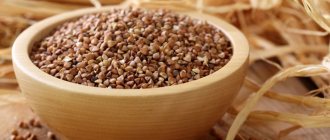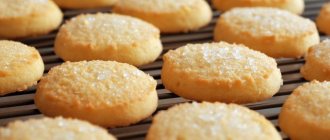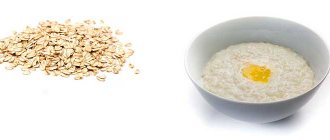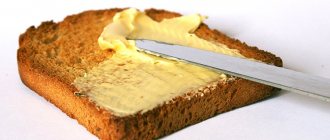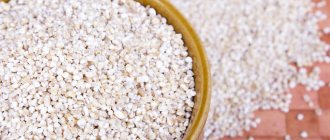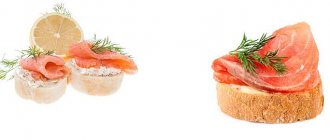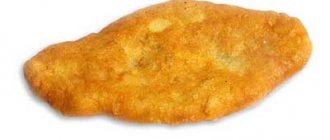In the last article, we learned about the calorie content of Chinese cabbage and now we can use this product against excess weight! Today, we are interested in a rather controversial topic - the calorie content of boiled rice. Is this dish effective for losing weight and healing the body? Let's figure it out together.
Rice is one of the most popular grains in the world! Without it, it is unimaginable to imagine Indian, Thai, Japanese and other cuisines. In many countries, rice is not called “bread” for nothing. At the same time, boiled white rice is often used in cooking not only as a side dish, but also as a main dish or ingredient.
Boiled white rice can have different textures, shapes and lengths. All this, of course, depends on the variety and type of cereal. Boiled white rice can be stored on the refrigerator shelf for up to five days. However, it will bring great health benefits if consumed immediately after preparation.
Rice: beneficial properties and contraindications
- Boiled rice, the calorie content of which certainly allows it to be included in diet menus for health improvement and weight loss, is rich in natural fiber and starch.
- And complex carbohydrates in the product are considered the most useful.
- It is these carbohydrates that can provide our body with the necessary charge of energy and not remain in the body as a fat layer.
- Doctors recommend rice dishes and diets for people suffering from diseases of the cardiovascular system and kidneys.
This dish in any of its manifestations is not recommended for regular consumption by those who suffer from constipation and diabetes. Just like potatoes, the calorie content of which we reviewed in this article!
Calorie content of unpolished rice
To obtain unpolished rice, the grains are subjected to mechanical processing, during which a thin layer is removed from the grains. The germ and bran membrane are completely preserved. The unpolished variety can be red or brown, its calorie content varies between 100-130 kcal. The cereal is useful for people suffering from gluten intolerance, which is present in white varieties.
The unpolished variety needs to be soaked: it is poured with hot (no more than 60° C) or cold water for 4-5 hours. The finished dish has a specific taste and aroma of walnuts. Before cooking, soaked rice must be rinsed several times and cooked according to the standard procedure.
Heat treatment does not in any way affect the calorie content of the cereal and the ratio of proteins, fats and carbohydrates. Cereals contain a large amount of magnesium, so its regular consumption helps restore the nervous system and normalize sleep. The fiber present in the composition acts as a sorbent, cleansing the body of waste and toxins.
Brown and brown varieties of rice have a beneficial effect on the intestines: with their help you can get rid of constipation for a long time. Cereals are useful for people with stomach ulcers. After cooking, the rice must be allowed to brew: to do this, wrap the pan with the grain in a towel and leave for 60-90 minutes.
Boiled rice: composition
Properly cooked white rice retains most of its beneficial properties. Chemical composition of boiled rice: sodium, phosphorus, iodine, iron, zinc, calcium, potassium.
This product is also rich in vitamins, which are represented by the following list: vitamin PP, H, E, D, B6, B5, B2, B1.
How many calories are in boiled rice with water?
Quite often, many people are confused about the number of calories in boiled rice, because it all depends on the type of product and the different volume of water absorbed during cooking.
For example, if for cooking you take 100 grams of a dry white long-grain product, the calorie content of which is 360 kcal, add 300 ml of water to it and cook, you will get 300 grams of boiled rice , its energy value will remain the same. And if part of the water evaporates during cooking, then the amount of product will be smaller, and accordingly, the calorie content will be slightly lower.
Remember also that the number of calories increases when you add foods such as:
Main types of rice
Also, the calorie content of boiled rice differs (albeit sometimes insignificantly) depending on the type of cereal.
The most common in cooking are:
- Oval grains up to 5 mm long. They usually have a more round shape, which is why they are often called “round”. This low-calorie boiled rice exhibits its taste best in puddings, casseroles and milk porridges. This type of rice is distinguished by its creamy structure, stickiness, and softness of the grain.
- Medium grains up to 6 mm, characterized by a larger width. During cooking, this type of rice absorbs a lot of liquid, sticking together and becoming soft. This product is best used for making paella or risotto.
- Long grains up to 8 mm in length, absorbing a moderate amount, due to which this type of rice cooks much faster than the ones described above. This harsh type of cereal is best suited for making desserts, salads, appetizers and first courses.
If you want to learn more about how to use the calorie content of rice to correct your figure, watch the video!
Peculiarities
Thanks to different processing technologies, rice can have different properties and qualities. This product is the basis of any diet and is especially valued in the diet. The composition includes the following beneficial substances:
- A large amount of proteins;
- Complex carbohydrates;
- B vitamins;
- Trace elements and minerals.
Thanks to its rich composition, the product provides the body with a replenishment of the necessary components. Thus, rice is a very valuable and essential component of the diet.
The useful composition of the product is distinguished by a very small amount of fiber. It is thanks to this that all substances are well absorbed by the body. There are practically no special contraindications to the consumption of such cereals. As a side dish or porridge, this product is very healthy and has a pleasant taste.
Low-calorie rice in cooking
- As noted, the calorie content of boiled rice with salt allows it to be used for preparing daily dishes.
- Fortunately, there are, if not millions, then thousands of recipes with it. White rice is considered an ideal product for making casseroles, puddings, snacks, pancakes, salads, soups, and cereals .
- Quite often, boiled rice is also used to fill meat rolls, cabbage rolls, stuffed peppers and poultry.
How to properly cook fluffy rice in a saucepan?
However, in order for the cooked rice dish to please your taste buds without causing disappointment, you must follow some rules when preparing it.
Here they are:
- Every time before cooking rice cereal, be sure to rinse it several times;
- In order for the finished rice to be crumbly, it is necessary to cook it based on a 2:1 ratio (two parts water to one part rice);
- In order not to constantly disturb the rice during cooking, you should take a container with thick walls and a bottom;
- It is recommended to cook white rice over medium or low heat after boiling;
- Always cook rice covered, this way you will avoid losing the moisture needed for cooking;
- After all the liquid has been absorbed into the cereal, you need to taste it to determine the degree of readiness.
Boiled white rice, the calorie content of which our dear readers are interested in, also has remarkable absorbent properties. It is not surprising that it is most often used to cleanse the body. More on this later.
Proteins, fats and carbohydrates in rice
The protein, fat and carbohydrate content of rice depends on the variety and how it is cooked.
So, as already noted, in ordinary white cereals:
- 2.2 g proteins;
- 0.5 g fat;
- 24.9 g carbohydrates.
Brown rice contains 6.3 g of the first element, 4.4 g of the second, and 65.1 g of the third. That is, the brown variety is much more nutritious in these three substances.
If we talk about the nutritional value of black rice, it contains:
- proteins, 4.1 g;
- fat 0.4 g;
- carbohydrates 21 g,
In the pink variety - 0.21, 0.3 and 8.66 g, respectively.
The product cooked in water has a nutritional value for fats, proteins and carbohydrates of 6 g, 7.4 g, and 77.1 g, respectively. If you make porridge with milk from white rice, then fats per 100 g will increase to 16 g, and at the same time proteins and carbohydrates will decrease to 2.5 and 3.1 g, respectively.
Boiled rice for weight loss
If you have ever been interested in fasting days, cleansing the body of waste and toxins, as well as losing weight, then you know that a diet based on boiled rice is a frequent guest there. Stars of the catwalk, cinema and music constantly talk about the effectiveness of this product in this area. On our website you can find a menu of such diets in the menu section of the same name.
Boiled rice diet
This is more likely not a diet, but a fasting day. After all, even nutritionists note that you cannot eat rice alone for more than 2 days because of its binding properties. Otherwise, you may harm your own health.
- For weight loss, we will use the calorie content of steamed boiled rice and the calorie content of boiled rice in water with salt.
- So, cook or steam porridge from 200 g of cereal and divide it into 5 equal parts. They will become our food for the day.
- It is best to eat portions at the same time interval (for example, every 3 hours).
- On such a day you can drink purified water, warm green tea and kefir. If you really want to eat, you can eat one medium green apple.
Calorie content of rice
Calorie content of white rice boiled in water per 100 grams
Boiled white rice has a calorie content of 116 kcal per 100 grams. This is not much, considering that to burn 100 kcal, it is enough to vacuum for 25 minutes, actively work in the garden for 15 minutes, or walk quickly around the yard or street.
Also, 100 g of cereal contains 2.2 g of proteins; 0.5 g fat and 24.9 g carbohydrates. Therefore, the product is recommended for those who do not want to gain weight.
Energy value of rice boiled with milk
If rice porridge is boiled in skim milk, its calorie content will be slightly lower compared to rice boiled in water - 97 kcal. Otherwise, the calorie content may vary somewhat depending on how much fat the milk product is used and whether sugar and butter are added during cooking.
Rice porridge belongs to the category of dietary products. It is often included in the diet of people who are recovering during the postoperative period or after suffering severe forms of illness. The exception is diseases of the stomach or intestines.
Rice porridge with milk contains slow carbohydrates. Thanks to them, the body receives energy replenishment for a long time. If a person follows a gluten-free diet, then rice is a good choice due to the lack of gluten in it.
Brown, unpolished rice
Brown rice is slightly healthier than white rice. After grinding, the white variety of cereal remains without a bran shell, which is why it loses many beneficial properties and vitamins.
Brown rice has a high concentration of vitamins and minerals, as well as a wide range of them. If you steam the grain for a little while, it will acquire a yellowish tint and become slightly transparent. In this case, some useful substances will move into the depths of the grains. If you polish the grain, you get regular white rice with less nutrients.
Since the concentration of vitamins is quite high, brown rice can have a complex effect on the human body.
It contains:
- Minerals . Phosphorus and silicon predominate. Potassium, calcium, sodium and magnesium are found in slightly smaller amounts. There is iron, zinc and chlorine in very small quantities.
- Microelements. There are small quantities of everything necessary for the body: cobalt, iodine, copper, chromium, vanadium, aluminum. There is also manganese, and its content in 100 g of grain provides 187% of the daily need of the human body for this substance.
- Vitamin complex. Brown rice contains the most vitamins from group B: B1, B6, B5. if the grain is not polished, it contains B2, B9, PP, E, K.
Black, wild rice: calories per 100 g
Boiled rice (calorie content per 100 grams of the black variety is 101 kcal) tastes almost no different from ordinary white cereal . Black rice is called such only conditionally, because of its similarity in shape to ordinary white cereal. In fact, it is the fruit of the aquatic plant.
The product is quite expensive because it is not at all easy to assemble and process. America is considered its homeland, which is why this rice is also called Canadian. It tastes slightly sweet and has a nutty aftertaste. It has the same vitamin and mineral composition as brown cereals.
Because black rice is low in calories but high in fiber, it is good for overweight people , but also good for everyone else.
Due to the unusual taste of rice, there are a lot of dishes with it. Famous recipes include salads, soups, pilafs and even dessert dishes. If you mix white long-grain rice and black wild rice, you will get an excellent side dish for both animal and fish meat. It also has good compatibility with legumes, which vegetarians can take note of.
Black rice takes a long time to cook. Before direct cooking, it must be soaked in cold water for 2 hours or in boiling water for 1 hour. Next, the water should be drained, freshly collected, and then put on fire for 30-40 minutes, covered with a lid. If the grains “open”, this will indicate their readiness for consumption.
Calories in pink rice
Boiled rice (calorie content per 100 grams of the pink variety is 283 kcal) has a slightly sweetish taste. Pink rice is more nutritious than others. During the cooking process, its kernels remain intact, as well as its crumbly consistency. The finished product smells nice and is quite tasty.
Its level of nutritional and nutritional value is between the values of these parameters for polished and unpolished rice. This product will be good for those who like a healthy lifestyle.
Pink grain is almost not processed, due to which it retains most of the beneficial substances. It contains slightly more protein than regular white rice - 8-10%. At the same time, there are all vitamins belonging to groups E, B and PP. The content of potassium ions is also at the proper level.
If you regularly eat pink rice, you can significantly reduce the likelihood of diseases associated with oncology, heart and blood vessels. With its help, you can increase immunity and at the same time get rid of possible lack of vitamins in the body.
Calories in red, brown rice
Brown rice is the same brown rice. In general, it is the same white cereal, only it has gone through fewer stages of processing. From the brown version of the product, only the outer peel, which is usually yellow, is removed.
At the same time, the rest of the shell remains on the grain. The color range of this rice can vary from light brown to chocolate.
The grain has a predominantly elongated shape. The bran gives brown rice its nutty aroma and flavor.
As for calorie content, per 100 g it is equal to 337 kcal.
This type of cereal has been used in food for more than 10,000 years.
Since it is quite logical that they did not immediately learn how to clean the cultivated crop, it was initially eaten in its brown form.
Rice on water with butter and salt
Not every person can eat boiled white rice simply in water, without adding oil and salt to it. With seasonings, the dish will be somewhat tastier, but at the same time higher in calories.
So, per 100 g of boiled seasoned cereal there are 119.4 kcal. At the same time, a regular boiled product without additives contains 0.5 g of fat, and after adding salt and oil this mark reaches 2 g. Proteins and carbohydrates remain at approximately the same level.
Parboiled, long grain rice
Boiled rice (calorie content per 100 grams of the long-grain variety is 365 kcal) takes a little longer to cook than the above-mentioned types. This category includes those varieties whose grains start at 6 mm in length and can be larger, and at the same time are elongated in shape.
Often, two types of this type of product are used in cooking - Jasmine or Basmati. Sometimes they resort to cooking Thai rice. Long grain cereals can be traditionally white, brown or steamed. In fact, these are the same product, differing only in the processing methods.
In addition to being high in calories, the product contains a large amount of carbohydrates.
It also contains a full spectrum of vitamins:
- IN;
- E;
- N;
- RR.
Contents confirmed:
- Selena;
- copper;
- phosphorus;
- potassium;
- zinc;
- manganese;
- sodium
Long grain rice is high in fiber and helps improve digestion and metabolism.
Calorie content of boiled white rice with egg
It is not for nothing that boiled rice is considered a universal product. It is good for Lenten dishes and regular ones. If you add an egg to regular rice, the taste will remain almost the same, but the satiety will increase several times. The calories will also jump a little. 100 g will contain 144 kcal, but regular boiled rice contains 116 kcal.
So, after adding an egg, the calorie content of the dish increased by 28 units. If we consider that this product of animal origin is usually combined with long-grain porridge, then the calorie content will be 393 units.
Calorie content of stewed cabbage with rice
Stewed cabbage with rice is a dish of Greek cuisine. Its true name is Lahanorizo. It is a good addition to the Lenten table. It tastes good both hot and cold.
Cooking does not take much time. The calorie content of the dish is also not particularly high - 106.8 kcal. This means that lahanorizo is well suited for those who follow a diet and watch their figure.
Calorie content of rice with raisins
Boiled rice (calorie content per 100 grams in this case depends on what ingredients are used) is a healthy dish with a lot of vitamins. If you are supposed to have kutia, which will contain nothing except the 2 ingredients noted, then it contains only 137 kcal.
In general, raisins and rice are the most harmonious ingredients for creating different dishes. In one of the versions of their combination, a third product is added – butter. In this case, calories will be 165 units. If we mean using a long-grained version of cereal, then their content goes beyond the mark of 400 units (approximately 420).
There are also options with the addition of carrots, various fruits or nuts, and honey. Thanks to such combinations, this dish is classified as a dessert dish.
Cleansing the body with rice
This method of cleansing the body of toxins, waste and other harmful substances (salts, poisons, etc.) that enter it along with food and air is very convenient.
Let's look at the stages of preliminary preparation for cleansing the body with rice at home:
- Fill 3 kg of clean oblong rice with 10 liters of purified water;
- The next day, change the water and wash the rice thoroughly;
- We continue the above procedure for another 4 days. Until the liquid drained from the cereal is clear;
- Drain the water and dry the rice on the tablecloth. Then we pour it into a paper bag for storage.
And here, in fact, is the cleaning procedure itself. Every morning we cook porridge from one large spoon of prepared cereal and eat it. You need to cook without herbs, oil and spices. We continue to cleanse the body until the rice runs out.
For those who are afraid of gaining weight, let us say right away that the calorie content of boiled rice in water described above will not allow this to happen. But rice boiled with butter is sad because of its calorie content, so we don’t use auxiliary products.
Rice and diets for weight loss
This cereal is a unique adsorbent and source of complex carbohydrates. At the same time, it is very filling, healthy and contains a minimum of calories. Modern dietetics includes a large number of diets based on this culture, all of them are very effective and healthy. Many people choose the Chinese or Japanese rice diet . Also, diets based on this cereal are divided into:
- gentle - it is envisaged that a small portion of boiled rice can replace some foods and dishes;
- hard - for a certain period of time you should consume only this product and wash it down with fresh fruit.
Regardless of the type of diet, you can stick to it for no more than 2 weeks. The fact is that rice culture, although incredibly useful, still cannot provide the body with all the required substances.
On fasting days, it is recommended to eat boiled rice without salt and other additives .
In most cases, with rice diets, the culture itself is boiled with ordinary water, which reduces calorie content. Next, the product is consumed together with lean meat, honey or fruit. All these diets do not differ significantly from each other in terms of duration and composition of acceptable dishes, but they are quite effective in one case or another.
If you want to lose weight and introduce low-calorie boiled rice into your diet, remember that thanks to it, excess fluid will be removed from the body, this process will be gradual and slow. However, you will not feel unpleasant consequences and will not experience stress, as often happens with “fast” diets.
There are some dietary methods where you don’t need to cook it, but just soak it. This is done like this:
- pour cold water over the cereals;
- leave them for 4 days, changing the water every day;
- After the specified period, drain the liquid, and the product itself can be consumed.
Additives to such a product do not need to be added; in terms of the number of calories, there are as many of them as in the boiled product, but this method allows you to preserve more vitamins and minerals, and can also be used with a strict rice diet for weight loss.
Calorie content of boiled rice: what do those losing weight say?
- Valya , 18 years old: It’s been half a year since I taught myself to eat rice porridge with apples and dried fruits in the morning. After just a couple of weeks, I noticed a positive result: lightness and a surge of energy. It was as if I had been sleeping before. Here you have 100 g of boiled rice! The calorie content of the porridge is also pleasing, although it is not worth eating more than one portion per day.
- Inna Nikolaevna , 42 years old: I won’t speak for myself, since back in the Soviets we were accustomed to this product (pilaf, porridge, kharcho, cabbage rolls, etc.). But a friend regularly cleanses herself using the Tibetan method. He says that many of the sores have gone away and hormonal levels have returned to normal. But, for me, rice is still an indispensable product in the kitchen, although this year I will definitely try to go on a rice diet.
PS As you can see, Dear readers of the site “”, the calorie content of boiled rice is exactly the factor that can positively affect your figure and achieve the planned result!
What do you think about boiled rice? Share your recipes and healthy cooking techniques in the comments below!
How to choose the right rice
Basic principles:
- If, when buying rice, there are a lot of fragments in its grains, then it is better not to take this pack, because they will boil quite quickly, which is why it will not turn out to be a normal dish. Broken rice is not suitable for food, since you cannot cook tasty porridge with it, even if a professional does the cooking.
- You should not buy a product where the grains are white, like chalk. These are unripe rice kernels that will be difficult to cook.
- If there are rare yellow seeds in the pack, then this rice was most likely stored carelessly in large piles and in places with high moisture. This means that rice may contain harmful fungi, which usually develop in conditions of high moisture. Really high-quality rice is similar in color to frosted glass.
White boiled rice contains 116 kcal per 100 grams, which is why it is considered a dietary dish. The nutritional value depends on its type and what it is prepared with. To choose a quality product, you need to pay attention to its color - according to this parameter it should be similar to frosted glass.
Article design: Svetlana Ovsyanikova
The benefits and harms of rice
Why is this product so good and useful? Among the positive properties of rice, the following factors stand out:
- normalization of sleep;
- strengthening nails, teeth and hair;
- increased performance;
- cholesterol reduction;
- activation of attention mechanisms.
Rice also reduces the risk of cancer. That is why it is recommended for cancer patients to eat it. The product is very useful for men, especially in combination with seafood. This combo allows you to activate testosterone synthesis.
Photo source: shutterstock.com
But there are some contraindications for including this product in your diet. It is not recommended to eat it if you have an individual intolerance. You will have to give up cereals in case of constipation and in the last stages of obesity. Also, grains should not be included in the diet of children under six months of age.
Round grain rice: benefits for the body
- improves digestion;
- strengthens the intestines;
- removes harmful substances from the body;
- equalizes blood pressure;
- prevents the formation of malignant tumors;
- strengthens the heart muscle;
- reduces levels of bad cholesterol in the blood.
Round grain rice has a positive effect on the health of the upper respiratory tract, as it has a thinning and expectorant effect. Rice is a nutritious food. It energizes, gives strength, increases performance. Round grain rice is often used in folk medicine as a natural enterosorbent.
Brown rice calories. Benefit for health
Brown rice is considered a dietary product. It does not contain gluten, which causes allergic reactions when eaten. It includes:
- vitamins valuable for humans - E, K, PP, H, B1, B6, B12, B3;
- fiber in large quantities;
- folic acid;
- healthy microelements - phosphorus, iodine, selenium, manganese, magnesium, zinc, copper, iron.
Therefore, cooked foods based on brown grains are allowed to be consumed by all children and adults with diabetes or allergies, as well as the elderly.
The calorie content of the product is 330-370 kcal per 100 g.
Benefits of rice for human health:
- Strengthening the nervous system.
- Improving memory, concentration and brain activity.
- Replenishing the body with vital energy.
- Quickly satisfy the feeling of hunger.
- Stimulates blood circulation in blood vessels, increases arterial and venous tone.
- Strengthening the heart muscles.
- Normalization of intestinal function.
- Removing harmful toxins and waste from the body.
- Reducing the likelihood of cardiovascular and neurological diseases.
Brown grass helps in the fight against cancer. Being a powerful antioxidant, rice neutralizes the effects of free radicals, inhibits internal oxidative processes, and removes cholesterol.
Dietary foods made from whole brown grains are important for pregnant and breastfeeding women. Such products reduce toxicosis, relieve heartburn, and stimulate milk production.
Nutritionists advise using brown rice to improve your health, preserve youth, get rid of wrinkles and lose weight. The grains also strengthen hair and nails, add shine and elasticity.
Useful tips
- To lose weight, you need to create a negative calorie balance. The nutritional value of rice is quite high, so be sure to find the right sport. This could be volleyball, football, basketball, swimming, aerobics, gym, gymnastics, even horse riding. The main thing is the presence of loads that burn fat. Regular squats at home are also effective in burning calories. Even regular morning exercises will help, the main thing is regularity.
- You can't do without proper water balance. Porridge goes well with green tea, because they are both oriental products. But do not forget that any coffee, tea (black, green, red, white), various fermented milk drinks are liquids, but not water. The body needs about 2 liters of regular water daily for normal functioning.
- Healthy sleep. The body easily stores subcutaneous fat in reserve, but gives it away reluctantly. When the slightest stress factor appears, the weight loss process stops immediately. Therefore, sleep in a well-ventilated room for 7–8 hours, then you will have more strength and much less stress. If you didn’t have time to sleep at night, sleep a couple of hours during the day.
- Give up sweets. Light carbohydrates are the main enemy of all those who are losing weight, because they do not provide energy, but immediately go to the fat depot. They are found in abundance in cakes, chocolates, candies, pastries, ice cream, pies and other confectionery delicacies. For the sake of a beautiful and slender figure, declare war on them! Our only ally is dark dark chocolate. It contains natural cocoa butter, magnesium, which are good for the heart, and there is much less sugar.
- No salt! Salt retains water in the body, which causes water swelling and impairs the functioning of taste buds on the tongue. Remove “white death” from your diet and see how much brighter the taste of food will become, and 2–3 centimeters will be removed from your waist.
- Live well! Less worries that cause ravenous hunger, enjoy the moments more often, smile. Get a pet, they say they charge you with positivity.
Be healthy!
The nutritional value
Calorie content is an indicator that does not fully reflect the energy value of a product.
Before including white grain in your diet, you need to consider how much protein, fat, carbohydrates and other components it contains.
This way you can accurately calculate the nutritional value of white cereal.
Rice is used in cooking by many peoples. In eastern countries it is eaten instead of bread as a staple product.
The benefits and harms of white grain are caused by its constituent components. Nutrients found in 100 grams of rice:
- nickel;
- silicon;
- boron;
- calcium
- magnesium;
- phosphorus;
- sodium;
- iodine;
- iron;
- vitamins of groups B, E, PP, H;
- amino acids.
The product contains complete protein.
A serving of white grain contains 7 g of this important element for the human body. The product consists mainly (about 80%) of carbohydrates, which provides energy and muscle support.
Therefore, it should be included in the diet of people who want to lose weight.
It does not contain gluten and salt, so it can be consumed by allergy sufferers and those suffering from kidney and cardiovascular diseases.
100 g of cereal contains:
- protein – 6.7 g;
- fats – 1.5 g;
- carbohydrates – 78 g.
Calorie content of stewed cabbage with rice per 100 grams
Calorie content of stewed cabbage with rice per 100 grams is 106.4 kcal. A 100-gram serving of the dish contains:
- 2.23 g protein;
- 5.27 g fat;
- 13 g carbohydrates.
Recipe:
- 1 onion and 1 carrot are finely grated and fried in vegetable oil;
- 0.5 kg of cabbage is chopped and added to fried vegetables;
- cabbage with onions and carrots is mixed with a small amount of vegetable oil and stewed until half-cooked;
- make a hole in the middle of the stewed cabbage, add 4 tablespoons of washed rice and a little salt (to taste);
- the dish is simmered under a closed lid until the rice is cooked;
- Before serving, all components of the dish are thoroughly mixed.
